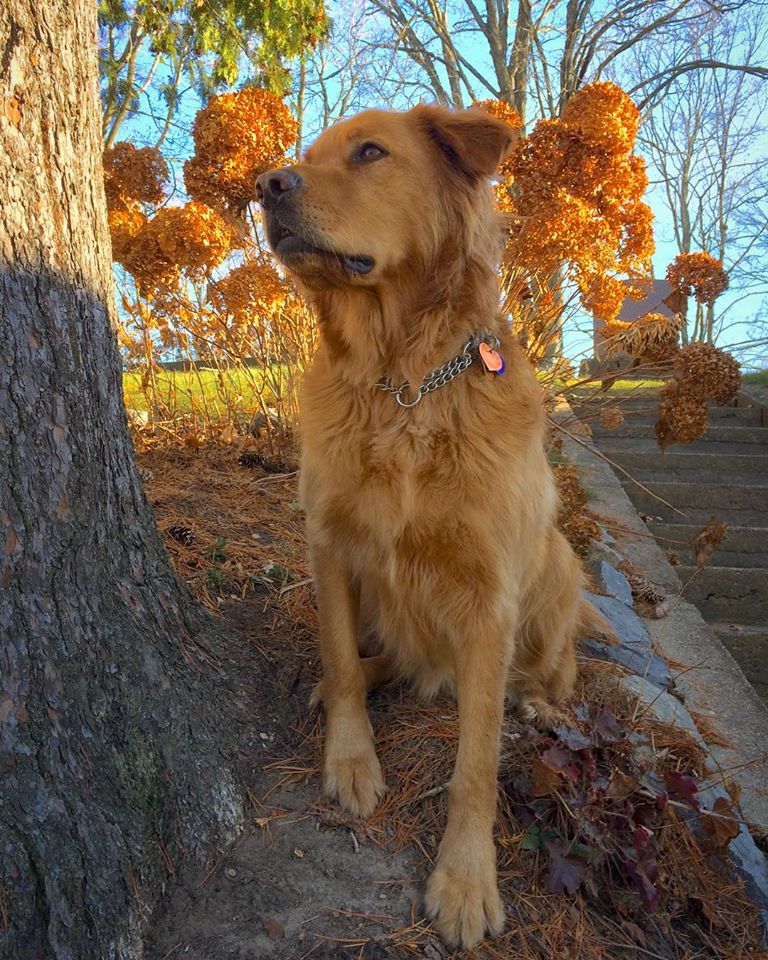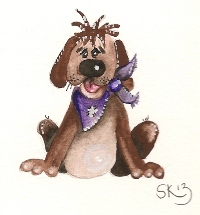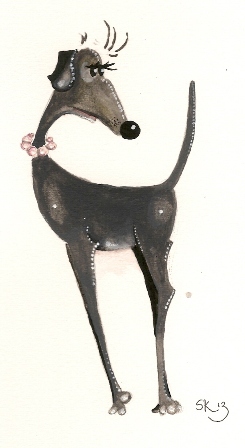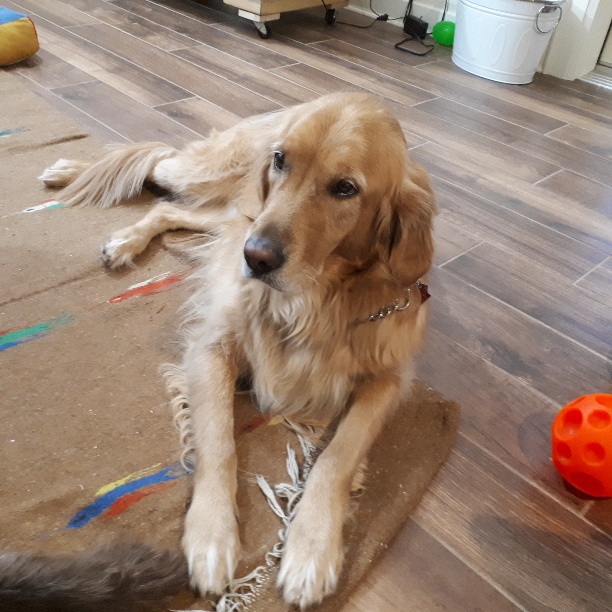More Dog Feeding Guidelines
for
Successful Transition to Raw Dog Food
Correct and sensible, dog feeding guidelines can make all the difference when transitioning from other types of dog food to a raw diet. I want you to be successful and I want your dog's transitioning period to be easy.
Mindset Success for Switching
to
Raw Dog Food
As with all things in life, when beginning the journey to change something for the better, the first thing to do is clear your mind of old information. Open your mind and be receptive to doing things in a different way.
Changing the way you feed your dog is a perfect example of a change in thinking. Some of my information about dog food and feeding dogs raw, may be new to you, but there is sound reasoning behind it. So let's get you and your dog off to a good start.
Getting Ready to Switch to a Raw Diet
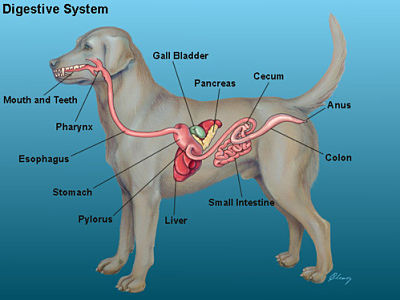
So, you've fed your dog his last kibble meal. Great!
Now you have to give his digestive tract enough time to clear out, in order to be ready to accept what's on the new menu.
Kibble and canned dog food is cooked, and is composed of ingredients totally unlike your new raw dog food. You need to get rid of it, literally. Get rid of it from your house, and get rid of it from your dog's body.
Take a look at the image above.
In general, it will take approximately 10 hours for your dog's last meal to be completely digested, from one end to the other. So you are going to double this time by not adding any more food. Let his digestive system rest for 20 to 24 hours. That means no food at all, only water. OK? Bear with me.
Your dog will not die if you don't feed him for one day. You will feel guilty, and your dog will be looking for food, but that won't kill either of you. This short time frame of fasting, will accomplish three things.
- the digestive tract will have time to empty completely.
- there will be no digestive conflict between old food and the introduction of new food.
- your dog will be hungry and will want to eat.
The topic of intermittent fasting is an interesting one, and the health benefits for dogs is huge.
Starting to Feed Again
After the 24 Hour Fast
OK, we're over that hump. Did you and your dog survive? Yes, I knew you both would.
So now it's time to offer your dog some of his new raw dog food. Since it is unfamiliar to him, he may need a bit of time to adjust to the new scent. Dogs don't have ( very few ) taste buds, so it's all about the nose!
Here's what to do.
- Start slowly by offering half the recommended amount according to the dog feeding guidelines chart for body weight ( below ) as his first meal.
- Put the food in the bowl and let your dog sniff it. Don't rush him.
- Leave him alone to familiarize himself and eat it.
- If he eats it...Great! You can offer him the full portion according to the dog feeding guidelines for weight ( below ), with his next meal.
- If he doesn't eat it, take up the bowl, store covered in the fridge, and offer again later.
*** Hunger is a survival instinct ***
So when your dog is hungry enough...he will eat. Most dogs will eagerly make this transition, but every now and again, a dog will hold out for his previous junk food diet. Don't buy in! He's a dog, and this is what he is meant to eat to nourish his body properly for his species. It's your job to help remind him that he's a dog, and not a junk food addict.
Junk Pet Food and the Damage Done
Dog Feeding Guidelines By Weight
When feeding a raw food diet for dogs, amounts fed are calculated according to how much your dog weighs. Typically that would be about 2% to 3% of total body weight per day as set out in the handy dog feeding guidelines chart below.
You know your dog, so common sense will tell you if his activity level, age and general health, require you to feed at the low end of the dog feeding guidelines scale, or at the higher end of the scale.
In my experience, most dogs are over fed. So often dogs will lose weight when starting on a raw food diet because the food is more nutrient dense, and assimilated more efficiently by the dog's body. Losing some weight is not a bad thing in my opinion. A leaner dog will maintain good health easier.
Seasonal Raw Feeding Tips and the Feeding Guidelines Chart
Here is a handy tip I have learned from many years of raw feeding.
When the weather is cold, feed more. When the weather is hot, feed less.
| Size of dog | Amount of food to feed in lbs/ozs daily |
| 5lb dog | 0.1-0.15 lbs or 1.6 - 2.4 oz or 1/4-1/3 cup |
| 10lb dog | 0.2-0.3 lbs or 3.2 - 4.8 oz or 1/3 -1/2 cup |
| 20 lb dog | 0.4-0.6 lbs or 6.4 - 9.6 oz or 2/3 - 1&1/4 cups |
| 50 lb dog | 1-1.5 lbs or 2 - 2.5 cups |
| 100lb dog | 2-3 lbs or 4 - 5 cups |
I feed my dogs at the high end of the dog feeding guidelines scale in winter, because extra calories are needed when the weather is cold to help my dogs stay warm naturally.
In summer when the weather is hot, I feed at the low end of the scale because fewer calories are needed to stay warm. It takes less metabolic energy to stay warm, when it's warm! Make sense?
Feeding Dogs Raw for Weight Control
If you are aware that your dog needs to lose weight, start to feed him at the 2% low level of the dog feeding guidelines scale. Do this for about a month in order to give your dog time to adjust to his new raw dog food. Most likely he will lose some weight.
If he needs to lose more weight you can:
- take him for longer walks to burn more calories
- Implement a 24 hour fast once a week. Intermittent fasting is healthful for many reasons
If your dog is too thin, start to feed at the 3% high level of the dog feeding guidelines scale. Do this for about a month, and then reassess. If he has gained weight, good. You're are on the right track.
If he still needs to add more weight, continue at the same feeding 3% for another month. You will know at this point whether you need to add more food, or simply maintain by feeding a little less. There is never any rush to lose weight, or gain weight. Your dog's body will adjust and balance itself naturally to the correct weight, when your dog is fed appropriately.
If you have any questions about feeding a raw food diet for dogs, please contact me.
Return to Dog Nutrition Naturally Raw Food Diet for Dogs
New! Comments
Have your say about what you've just read here. Use the comments box below.
Sharing is appreciated!
